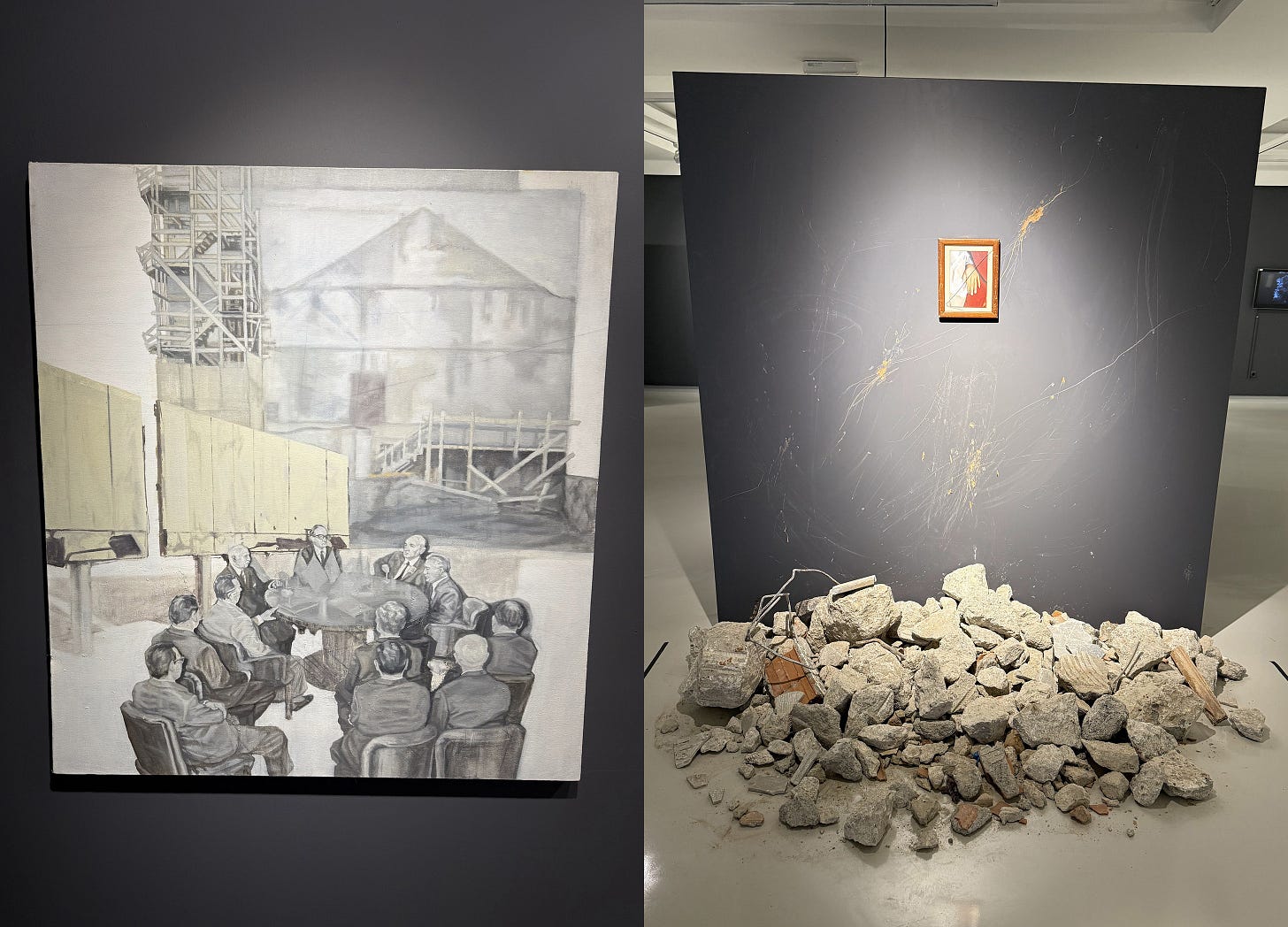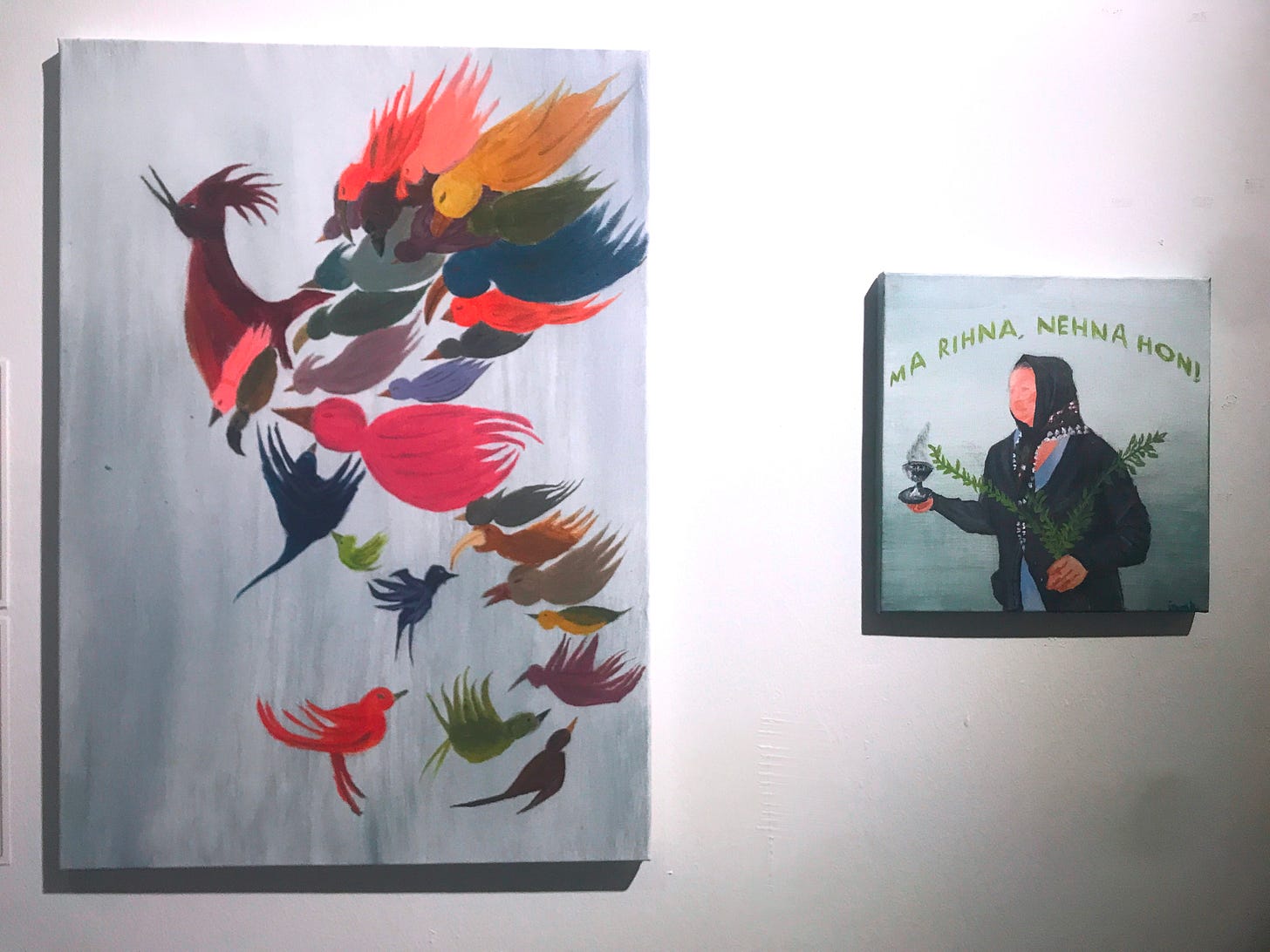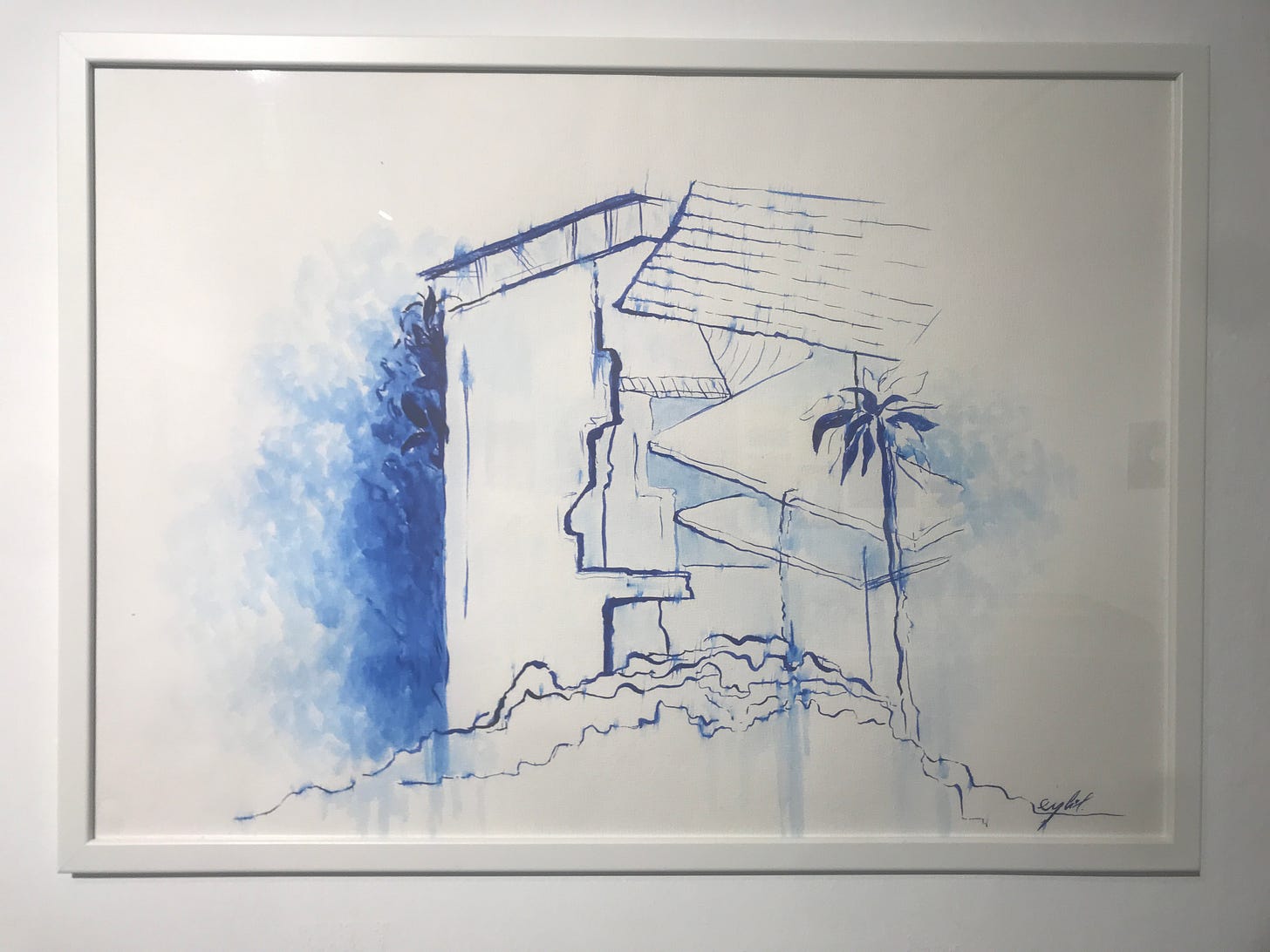Remembering 6 February 2023
Exhibitions and projects in Istanbul, Bursa, and Antakya mark two-year anniversary of devastating earthquakes by using art as a tool for healing, solidarity, and activism.

On the second anniversary earlier this month of the devastating 6 February 2023 earthquakes, 30 artists from Antakya, one of the hardest-hit cities, hung their paintings on the exposed interior walls of one of the many buildings still lying in ruins. Organized by the ANSAM Culture Association under the motto “Art heals, art unites,” this 6 February Remembrance Exhibition is just one example of how artists and civil-society organizations have turned to art over the past two years as a vehicle for building solidarity, a means of expression and emotional recovery, and a tool for remembrance.
An open-air art market that’s been operating in Antakya since the beginning of the year “provides space for social gathering and healing through art and culture while the city gets back on its feet,” organizer Hakan Boyacı told the AFP news agency. One of the artists in that market, Eser Mansuroğlu, uses a mosaic technique dating back to the Roman-era works in Antakya’s archaeological museum to depict some of the most wrenching scenes from the 2023 disaster, in which more than 55,000 people were killed in Turkey and neighboring Syria.
In the wake of such a tragic, violent event, art can be an important way of keeping alive the memory of places and people lost – and of fighting against the erasure of the negligence, corruption, and unscrupulous profiteering that helped destroy them, as critic İlker Cihan Biner suggests in a recent piece published in Turkish by Argonotlar.

After the 6 February earthquakes, two art collectives based in Antakya came together to create the Art at Zero Point project with support from VAHA, a transnational arts and culture program initiated by Anadolu Kültür in Istanbul and zusa in Berlin. Throughout 2024, Art at Zero Point organized public workshops and discussions on themes such as cultural memory and collective trauma, converting a van into a mobile art space and bringing in guest artists from around Turkey as collaborators and instructors. Artworks created as a result of these activities were exhibited at a gallery, Germany, in Leipzig in September 2024 and in Antakya in the first week of February this year.
In Bursa, the exhibition And Then What? brings together the works of young independent artists from different cities affected by the earthquakes. Organized by the Be Our Voice Platform and the Bursa Municipality and curated by Derya Yücel, it opened on the anniversary of the earthquakes and will run for one month, until 6 March.

Featured artists include Hatice Atamış from Hatay, who painted scenes from news coverage of the disaster on hardhats like those worn by rescue workers; Güler Kente from Şanlıurfa, whose oil and decoupage work “Depiction of Hope” shows a boy drawing an intact new home in front of a destroyed one; Mersin-born actor Ali Hikmet Kürekçi, whose short film “Underground” gives voice to those who were trapped under the rubble; and Muhammed Memduh Göktürk from Kahramanmaraş, whose photographs convey an eerie silence and the resilience of nature after the disaster.
In Istanbul, the exhibition We Are Still Here at DEPO showcases the paintings, poems, songs, sculptures, digital art, videos, and installation pieces of high school and university students as well as recent graduates from Hatay. It was organized by Talebeyiz Biz (We Are Students), an association established in Istanbul by two former educators to encourage young people to express themselves through art and to combat stereotypes about youth apathy.

We Are Still Here is the product of Talebeyiz Biz’s year-long Art Ambassadors project, implemented in the Arsuz district of Hatay in collaboration with the Füsun Sayek Association for the Development of Health and Education and with support from the Support for Civil Society Foundation, Turkey Mozaik Foundation, and Turkish Philanthropy Funds. Themes of rebirth and transformation figure prominently in the young artists’ work. Describing her acrylic painting of small birds gathering into the shape of a phoenix, 18-year-old Nehir Gökhan says: “Whenever I think of this bird, it always reminds me of Hatay – my city that has fallen seven times and risen again.”
In her video work “Despite,” Kavin Kenar derives inspiration from trees on the Arsuz coast that have bent in the strong winds but stayed firmly rooted. Other promising young artists to keep an eye on include İrem Karasürmeli, whose acrylic painting “We never left, we are here!” depicts one of the women who marched in Samandağ, Hatay, to mark the 40th day after the earthquakes, and Eylül Deniz Yıldız, whose mixed-media drawings of destroyed houses, “Zel, zele,” embody a sense of both chaos and stillness.
At the entrance to the exhibition, visitors are invited to add their own answers to complete the sentence “I am here, because…” One response seems to capture the spirit of all of these artistic endeavors:
“I am here because there are still stories waiting to be told.”
» And Then What? is on display at the Ressam Şefik Bursalı Art Gallery (6. Uçak Sok. No.1, Osmangazi̇) in Bursa until 6 March; opening hours are 9am-6pm Mon-Sat. (Paid subscribers can access a mini-guide to visiting Bursa at the end of this post.)
» We Are Still Here is at DEPO (Lüleci Hendek Cad. No.12, Tophane) in Istanbul until 26 April; opening hours are 11am-7pm Tue-Sat.





Excellent post thank you for sharing